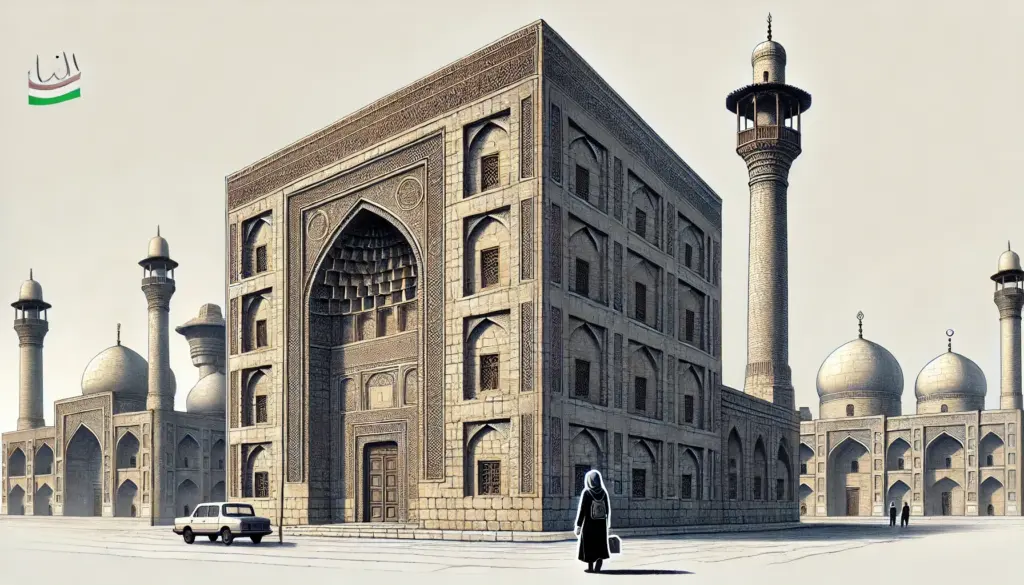ChatGPT:
Erzurum, located in eastern Turkey, is one of the country’s most historically significant cities due to its strategic location and long history. The city lies on a high plateau at an altitude of about 1,900 meters (6,200 feet), making it one of the highest cities in Turkey. It has been an important center for trade, military, and cultural exchange since ancient times.
Origin and Ancient History
Erzurum’s origins trace back to antiquity. The area was initially settled by the Urartians around 900 BCE, who built fortresses and controlled much of eastern Anatolia. The city itself was founded by the Romans in the 4th century CE under the name Theodosiopolis, named after Emperor Theodosius I. It was a military base designed to protect the eastern frontier of the Roman Empire against Persian attacks.
After the fall of the Roman Empire, Erzurum became part of the Byzantine Empire, serving as a strategic military outpost. It continued to play a vital role due to its location on the Silk Road, connecting Anatolia with the Caucasus, Persia, and Central Asia.
Medieval Development
Erzurum gained prominence during the medieval period as it changed hands between various powers. In 1071, following the Battle of Manzikert, the Seljuk Turks gained control of the city, renaming it Erzurum (likely derived from Arz-e Rum, meaning “Land of the Romans”). Under Seljuk rule, the city developed into an important center of Islamic learning and culture. The city’s architecture, including mosques, madrasas, and caravanserais, flourished during this period.
During the 13th and 14th centuries, Erzurum fell under the control of the Mongols, the Ilkhanate, and later the Ottoman Empire. Under Ottoman rule, the city continued to thrive as a trade center, benefiting from its strategic location.
Ottoman Era and Modern Development
During the Ottoman period, Erzurum became a key military post, especially during conflicts with Russia in the 19th century. The city was significantly affected by these wars, with fortifications built and the population fluctuating due to conflicts and occupations. Erzurum was a critical site in the Russo-Turkish Wars and was briefly occupied by Russian forces during World War I.
In 1919, Erzurum played a pivotal role in the formation of the Turkish Republic. It was the location of the Erzurum Congress, where Mustafa Kemal Atatürk and other nationalists gathered to lay the foundation for the Turkish War of Independence.
Modern Erzurum
Today, Erzurum is a regional capital and an important cultural and educational center in eastern Turkey. It is home to Atatürk University, one of the largest universities in Turkey, and hosts many winter sports events due to its mountainous terrain and cold climate. The city has modernized, but it still retains much of its historic character, with landmarks such as the Erzurum Castle, the Çifte Minareli Medrese, and several ancient mosques.
Erzurum is known for its harsh winters and is a center for winter sports, especially skiing. It hosted the 2011 Winter Universiade and has since developed its infrastructure for snow sports, becoming one of Turkey’s leading winter destinations.
Overall, Erzurum’s long history and cultural importance stem from its position as a strategic crossroads between East and West, making it a city of enduring significance in Turkish and regional history.
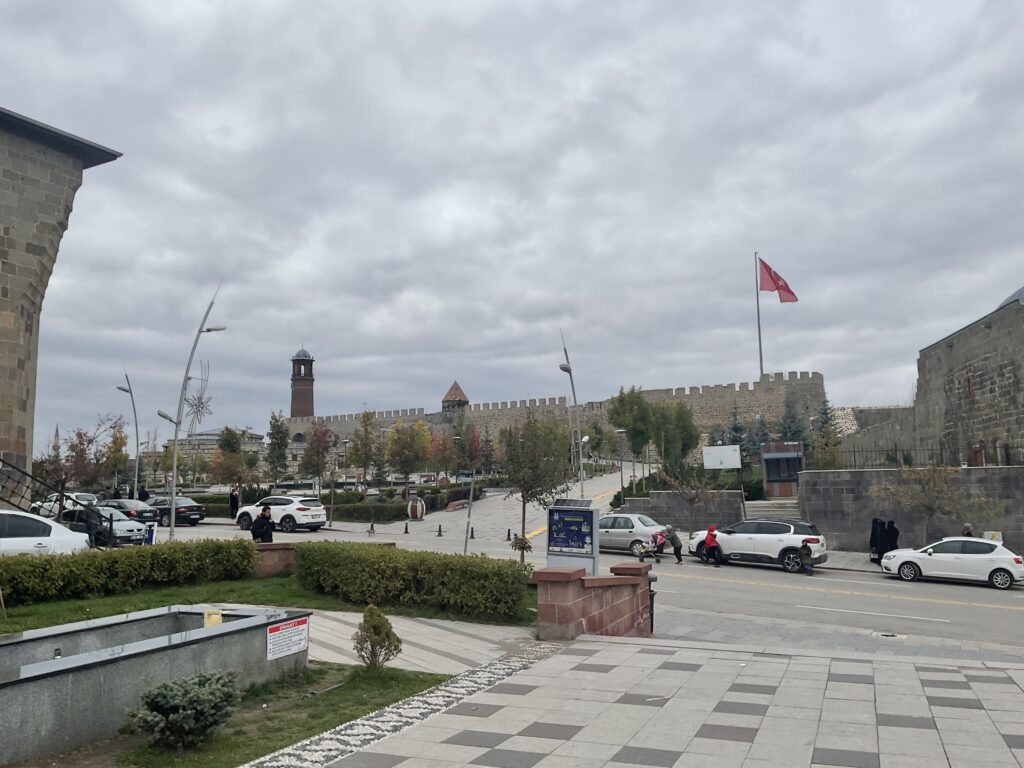
Erzurum is rich in historical monuments and tourist attractions, reflecting its long history as a cultural and military hub. Here are some of the key sites to visit in the city:
1. Erzurum Castle
• Description: A Byzantine-era castle built in the 5th century, later fortified by the Seljuks and Ottomans. It sits on a hill overlooking the city, providing panoramic views of Erzurum.
• Key Features: The watchtower, ancient walls, and a small mosque inside the fortress.
2. Çifte Minareli Medrese (Twin Minaret Madrasa)
• Description: A stunning example of 13th-century Seljuk architecture, this madrasa (Islamic school) is the symbol of Erzurum. It is characterized by its two towering minarets, intricate stone carvings, and monumental entrance.
• Key Features: Ornate stonework, geometric designs, and calligraphy on the facade.
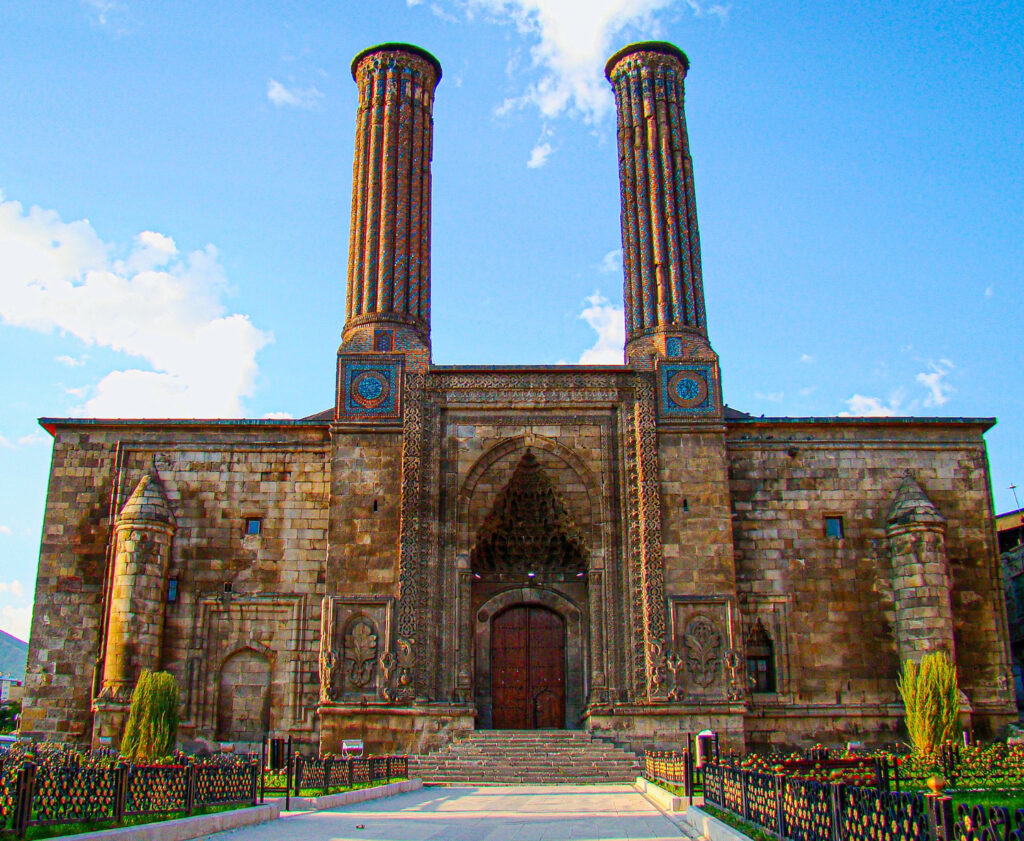
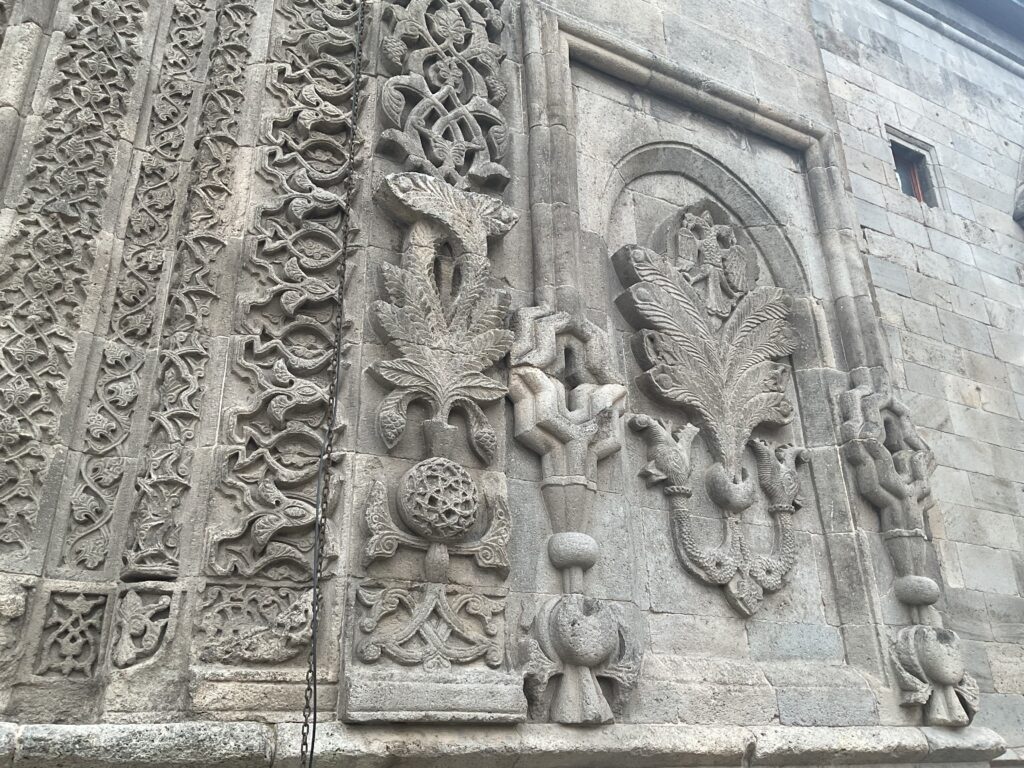
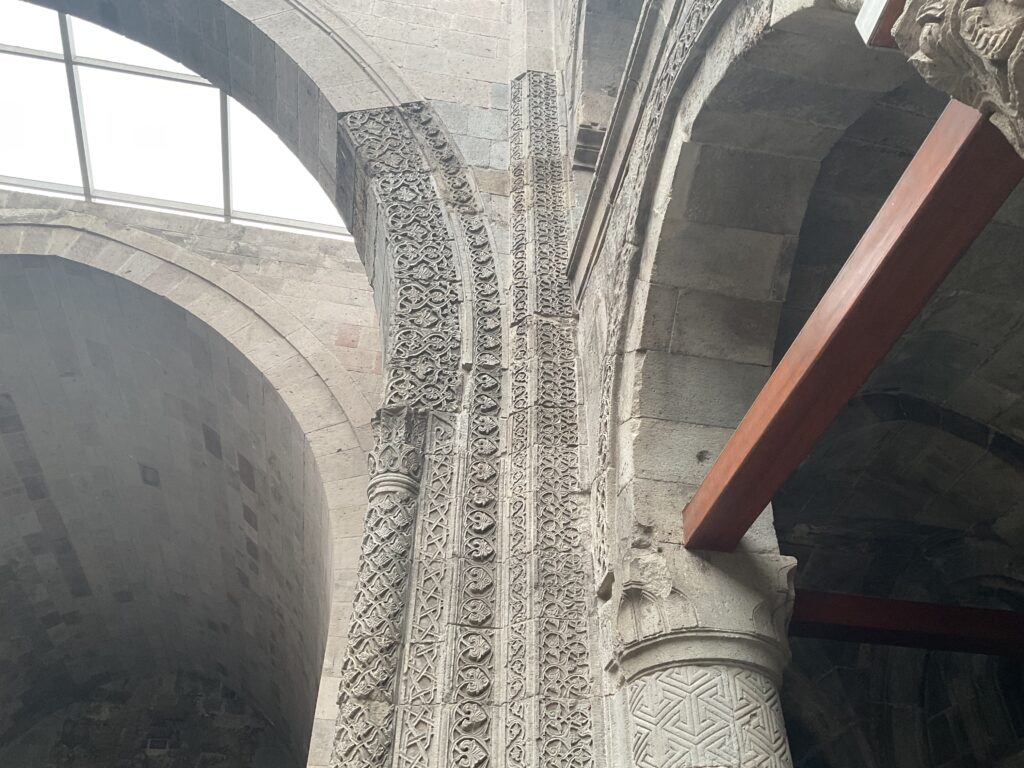
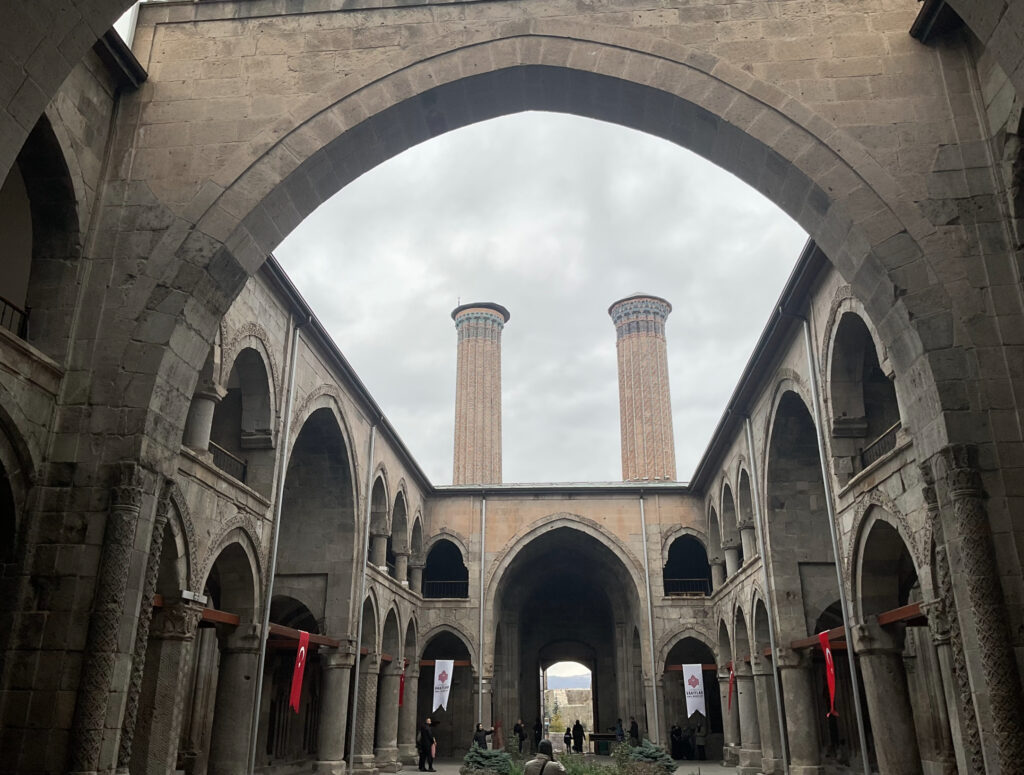
3. Yakutiye Medrese
• Description: Built in 1310 by the Mongol Ilkhanate, this madrasa is another prime example of medieval Islamic architecture. It was used as a theological school and now serves as a museum.
• Key Features: Its single minaret, elaborately carved portal, and a courtyard with a central fountain.


4. Ulu Cami (Grand Mosque)
• Description: Dating back to the 12th century, Ulu Cami is one of the oldest mosques in Erzurum. It was built during the Saltukid era and is known for its simple yet imposing stone structure.
• Key Features: Large prayer hall, thick stone walls, and five domes.
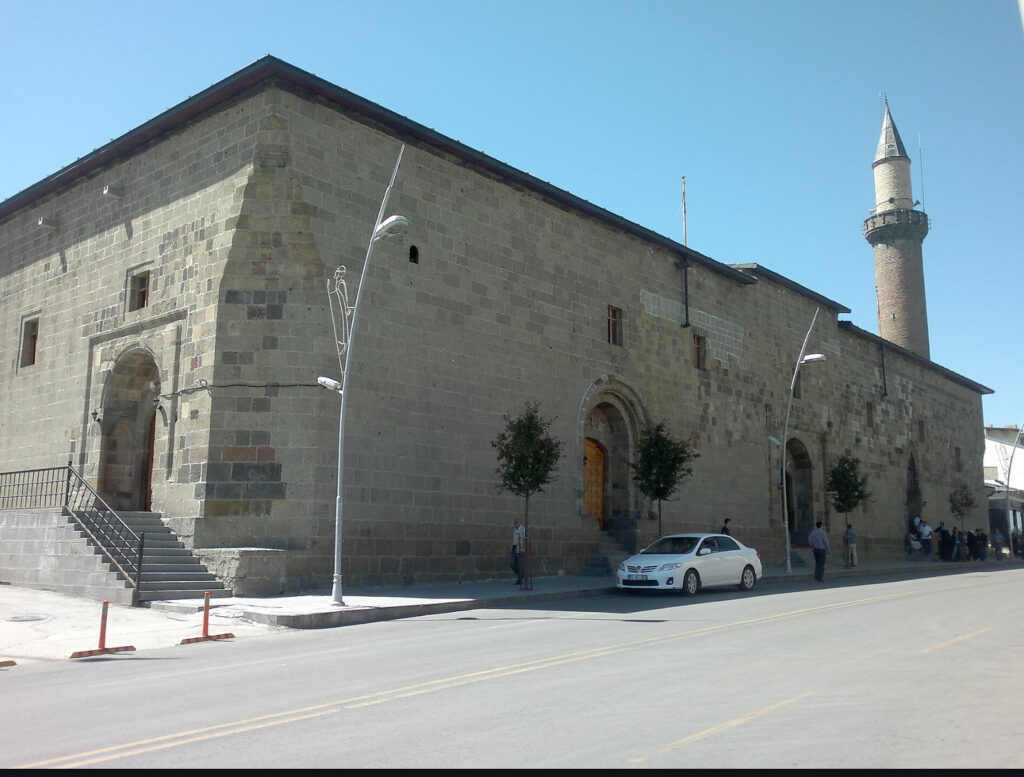
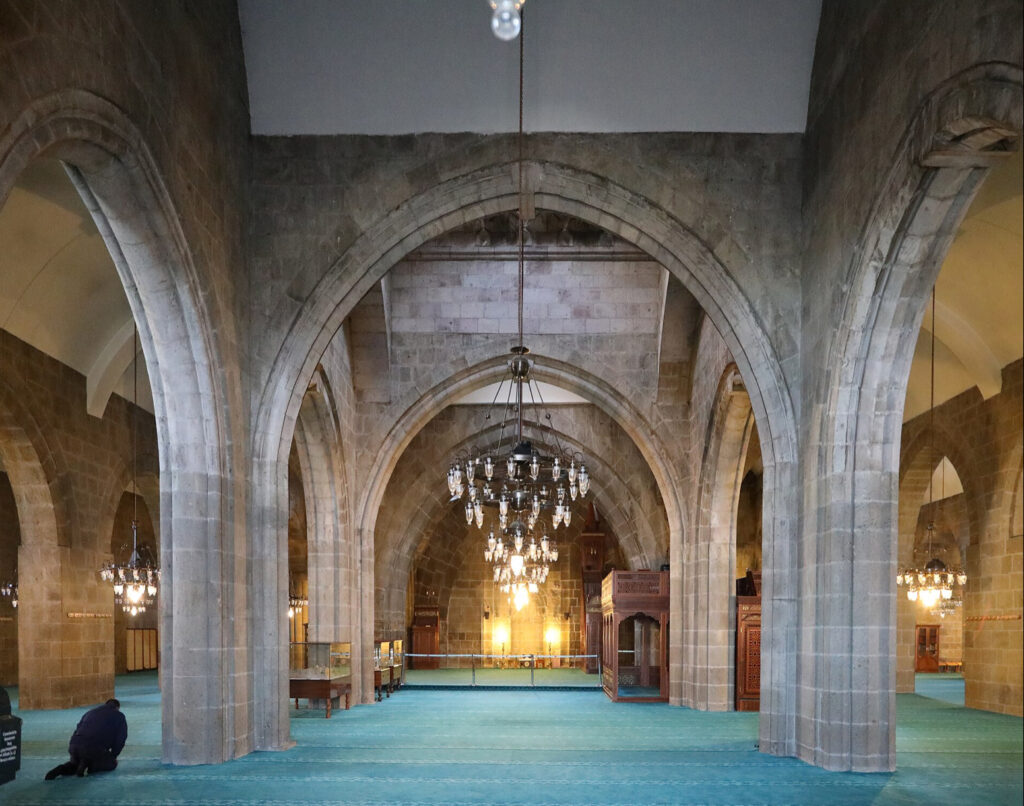
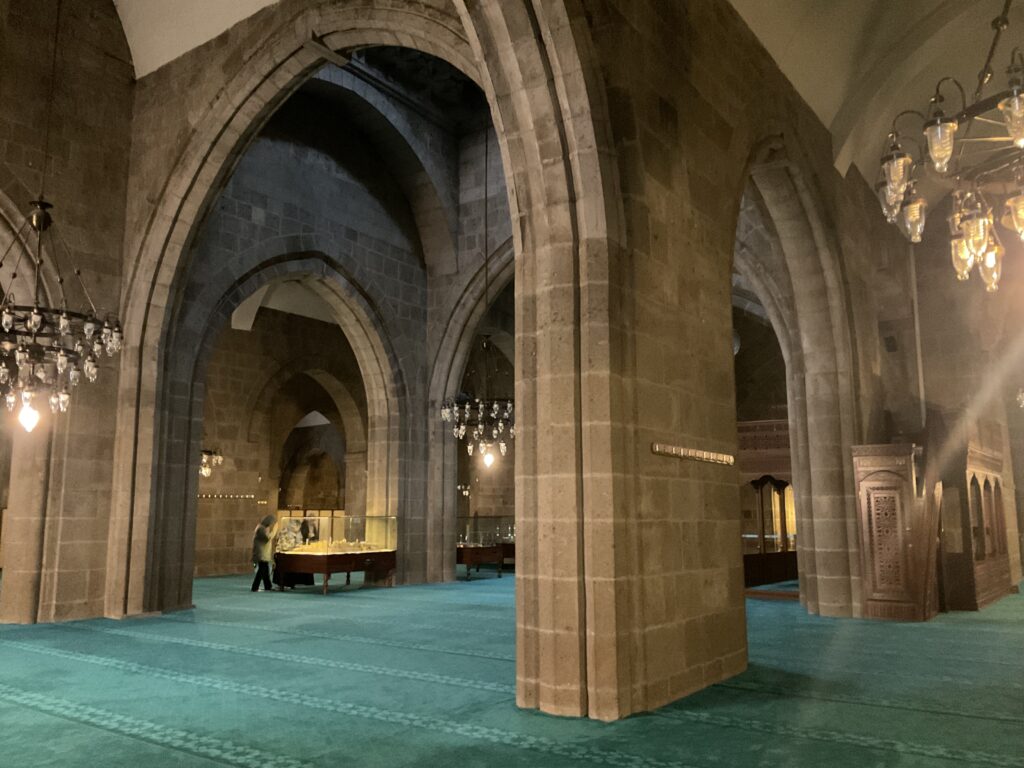
5. Three Tombs (Üç Kümbetler)
• Description: These 12th and 13th-century Seljuk mausoleums are unique for their cylindrical shape and conical roofs. They are believed to be the tombs of important rulers or religious figures.
• Key Features: Detailed stone carvings and intricate geometric patterns on the facades.
6. Rüstem Pasha Caravanserai (Taşhan)
• Description: Built in the 16th century by Rüstem Pasha, the grand vizier of Suleiman the Magnificent, this caravanserai served as a rest stop for traders on the Silk Road. Today, it is a bustling marketplace known for its Oltu stone jewelry.
• Key Features: Traditional architecture, large courtyard, and numerous shops selling local crafts.
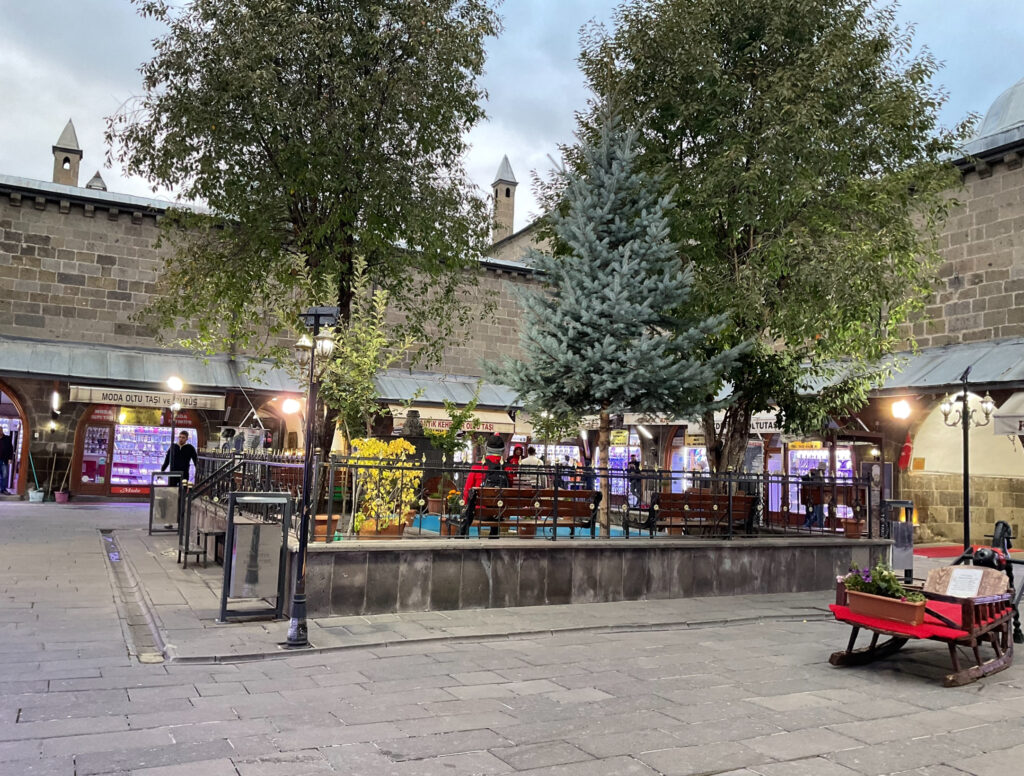
7. Erzurum Archaeology Museum
• Description: This museum houses artifacts from Erzurum and the surrounding region, dating from the prehistoric period to the Ottoman era. Exhibits include ancient coins, pottery, and weapons.
• Key Features: Collections from the Urartian, Byzantine, and Seljuk periods.
8. Atatürk House Museum
• Description: A historic house where Mustafa Kemal Atatürk stayed during the Erzurum Congress in 1919. The house has been preserved as a museum, showcasing personal items of Atatürk and photographs from the Turkish War of Independence.
• Key Features: Historic rooms, period furniture, and documents related to the congress.
9. Palandöken Ski Resort
• Description: Located just outside Erzurum, Palandöken is one of Turkey’s top winter sports destinations. The resort has modern facilities for skiing and snowboarding, as well as scenic views of the surrounding mountains.
• Key Features: Long ski runs, excellent snow conditions, and an elevation of 3,176 meters (10,419 feet) at its highest point.
Erzurum’s blend of ancient history, religious architecture, and natural beauty makes it a fascinating destination for visitors interested in culture, history, and outdoor activities.
Here’s a one-day itinerary for visiting Erzurum that combines the city’s historical sights with opportunities to enjoy local food specialties.
Morning:
1. Erzurum Castle
• Time: 9:00 AM – 10:00 AM
• Start your day at Erzurum Castle, where you can explore the ancient fortifications and enjoy panoramic views of the city. The watchtower is a great spot for photos and getting an understanding of the city’s layout.
2. Çifte Minareli Medrese (Twin Minaret Madrasa)
• Time: 10:15 AM – 11:00 AM
• Walk to the Çifte Minareli Medrese, the city’s iconic structure. Admire the stunning Seljuk architecture and the intricate stonework on the minarets and entrance.
3. Ulu Cami (Grand Mosque)
• Time: 11:15 AM – 11:45 AM
• Visit the nearby Ulu Cami, one of the oldest mosques in the city. Its simple but striking design offers a glimpse into the religious architecture of the Saltukid period.
Lunch:
4. Lunch at Gel-Gör Cağ Kebabı
• Time: 12:00 PM – 1:00 PM
• Head to Gel-Gör, one of Erzurum’s most famous restaurants, to try cağ kebabı, the city’s signature dish. This lamb kebab is slow-cooked on a horizontal skewer and served in thin slices. Pair it with local bread and ayran (a yogurt-based drink).
Afternoon:
5. Yakutiye Medrese
• Time: 1:30 PM – 2:15 PM
• After lunch, visit Yakutiye Medrese, a 14th-century theological school that now serves as a museum. Explore its history and Islamic architecture while learning about Erzurum’s medieval past.
6. Three Tombs (Üç Kümbetler)
• Time: 2:30 PM – 3:00 PM
• Walk to the Three Tombs, Seljuk-era mausoleums that are an important part of Erzurum’s architectural heritage. The geometric carvings and design of these tombs are fascinating.
Mid-Afternoon Break:
7. Café Stop at Tarihi Erzurum Evleri
• Time: 3:15 PM – 4:00 PM
• For a short break, visit Tarihi Erzurum Evleri, a historic café housed in a traditional Erzurum home. Enjoy Turkish coffee or demli çay (strong tea) and try some local sweets, such as kadayıf dolması (a sweet pastry stuffed with walnuts and fried).
Late Afternoon:
8. Rüstem Pasha Caravanserai (Taşhan)
• Time: 4:15 PM – 5:00 PM
• Spend the late afternoon exploring Rüstem Pasha Caravanserai, a 16th-century marketplace where you can shop for Erzurum’s famous Oltu taşı (black amber) jewelry. Take time to wander through the bazaar and admire the traditional Ottoman architecture.
Evening:
9. Dinner at Erzurum Evleri
• Time: 6:30 PM – 8:00 PM
• End your day with a traditional dinner at Erzurum Evleri, a restaurant in a historic house. Try more of the city’s culinary delights like erzurum ketesi (a type of pastry) or etli ekmek (a local flatbread topped with meat).
Optional Evening Activity:
10. Palandöken Ski Resort (Winter Only)
• Time: 8:30 PM – 10:00 PM (Winter Season)
• If you’re visiting during winter, consider heading to Palandöken Ski Resort for a night-time skiing session or simply to enjoy the beautiful mountain views and fresh air.
Local Food Specialties to Try:
• Cağ Kebabı: A unique lamb kebab, Erzurum’s most famous dish.
• Kadayıf Dolması: A fried dessert filled with walnuts and served with syrup.
• Ayran: A refreshing yogurt-based drink.
• Erzurum Ketesi: A savory pastry with a distinctive flavor.
• Etli Ekmek: Flatbread topped with seasoned minced meat, similar to a Turkish pizza.
This itinerary gives you a well-rounded experience of Erzurum, combining its rich history, culture, and local cuisine for an immersive visit.
